Unique Coral face polished and mounted on acrylic display
Jan 10, 2016 9:37:47 GMT -5
garock, quartz, and 3 more like this
Post by jamesp on Jan 10, 2016 9:37:47 GMT -5
Completed mount. One of a set cut from a 6 inch thick husk coral. Indoor light.
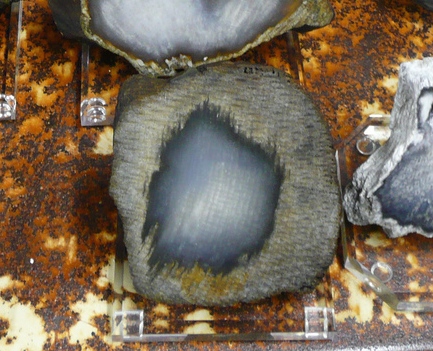
Bottom ground flat and epoxied to 5" X 5" X 3/4" acrylic base sold in the trophy business
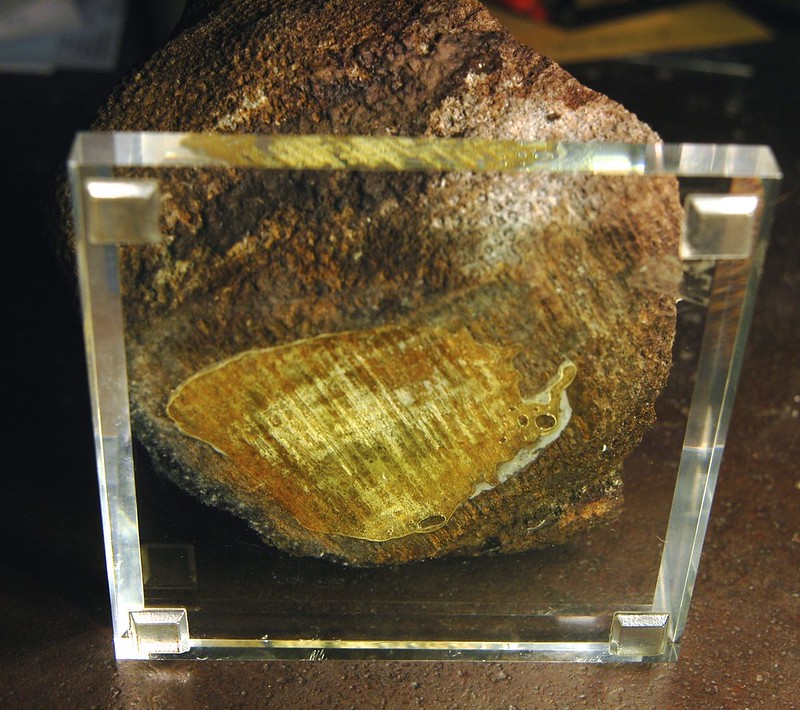
Another shot on a cloudy day outside, bluer due to cloud cover
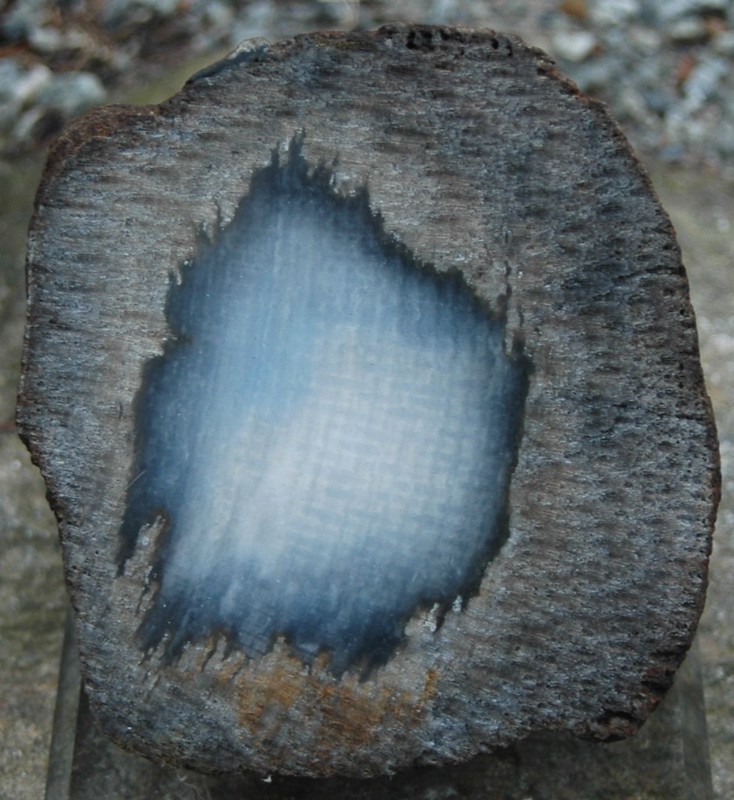
Thick husk from a spot where these occur on the Withlacoochee River. Sawn at 45 degree angle to tubes.
Silicification fingering out into husk. Husk silicified but porous.
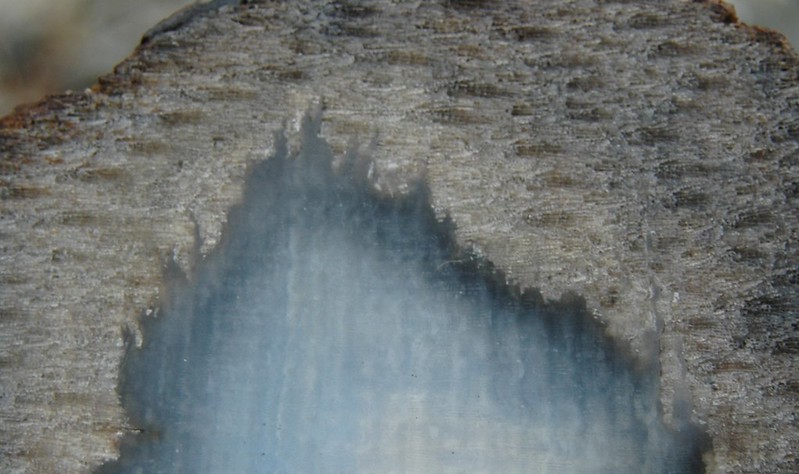
Glare photo showing satin face polish and porosity but partial silicification in husk. 45 degree angle approach of saw to tubes.
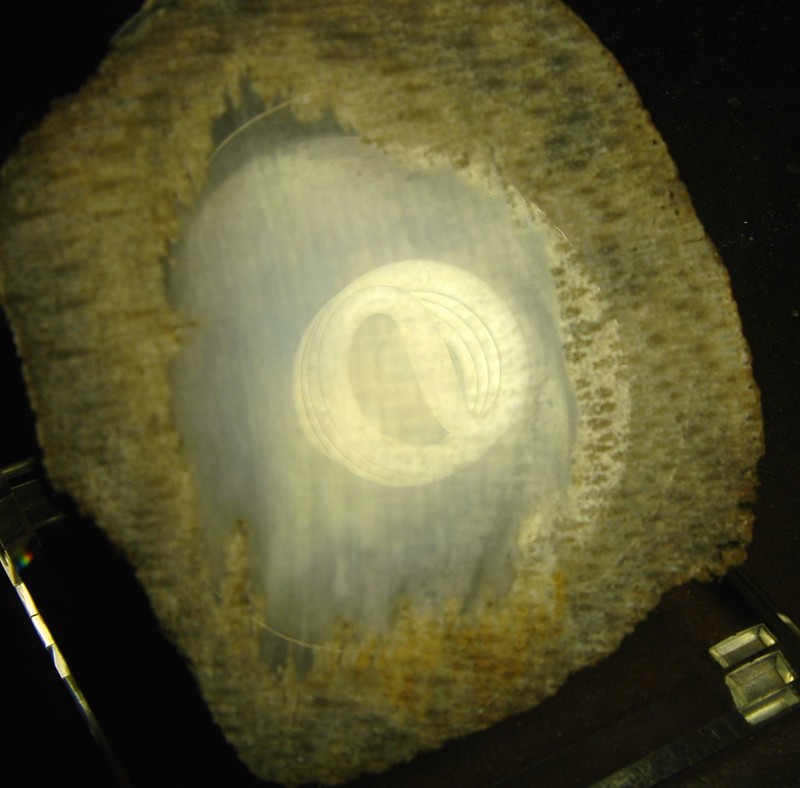
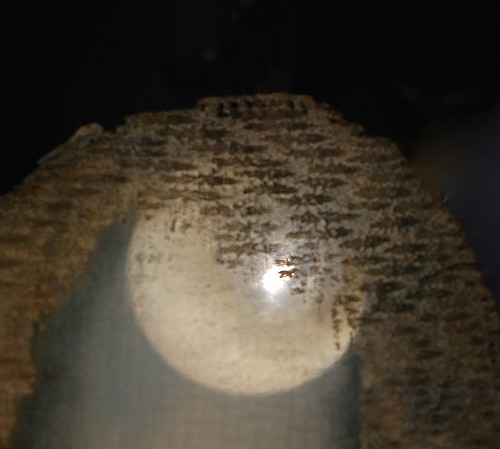
Incandescent lighting
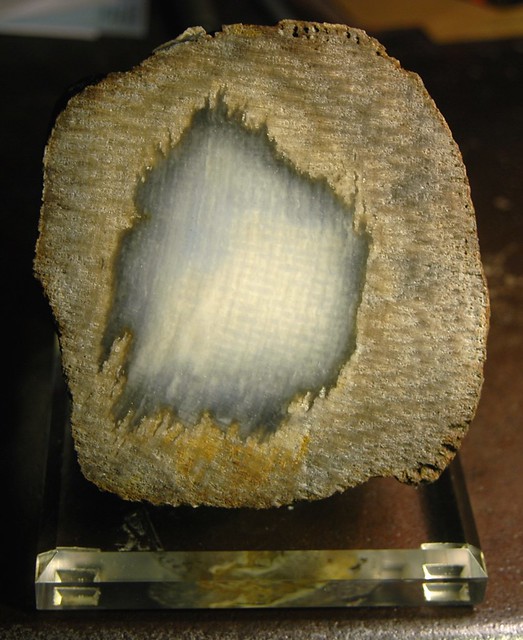
in some cases the silicification is in separate blobs. Sometimes dozens of silicified patches in a single large coral head.
As nature breaks down the softer husk the silicified sections separate and turn into gravel that forms gravel bars.
These smaller pieces look like miniature corals, but are actually silicified sections of the much larger original coral head.
Water soaking into the porous areas and freeze and quickly break the large corals down into pure silicified pieces.
Thick husks like this must be pried out of the clay below the freeze line where they were protected from the environment.
Or underwater for most of their existence.
Or water will freeze in cavities like the ones below and force the it to break apart leaving botryoidal faces and/or individual hollow sections
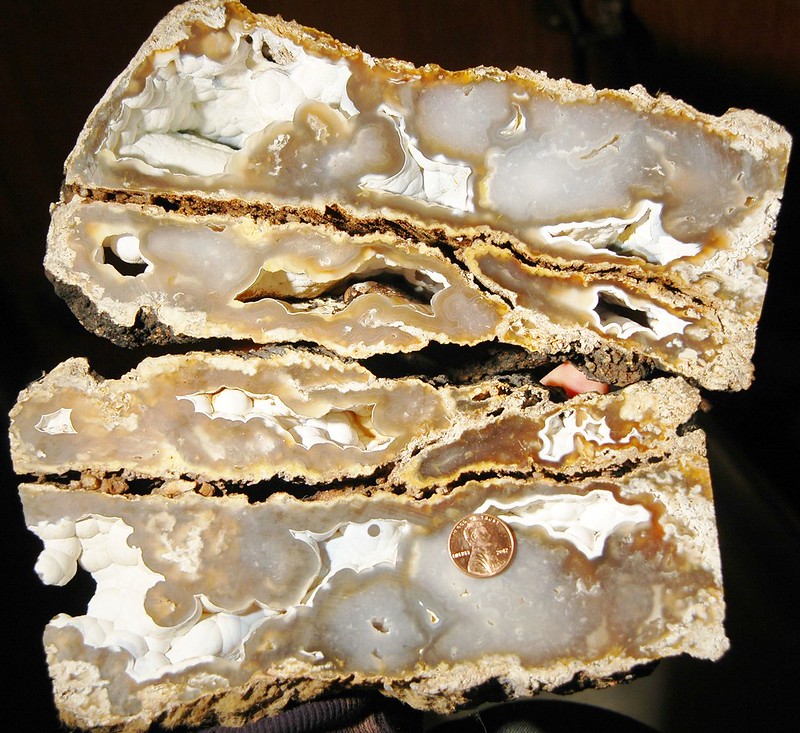
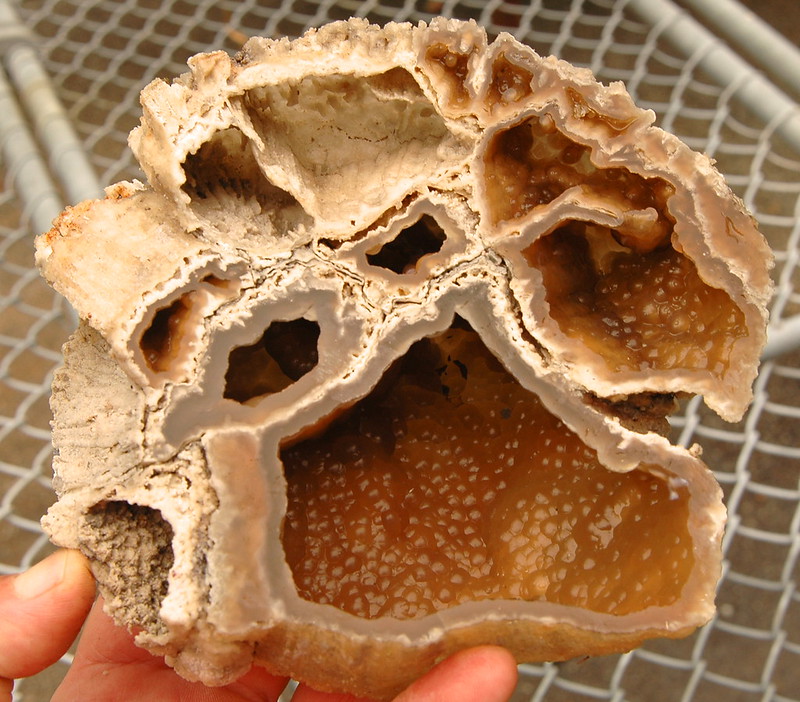
Silicified coral segment 'gravel' at most any shoal. Stained from predominate grey color to caramel by tannic water.
Always find high speed chips from native man making his spears and tools deeply stained from many years of exposure to the tannic water.
Tannic stain telling on long term exposure to tannic water.
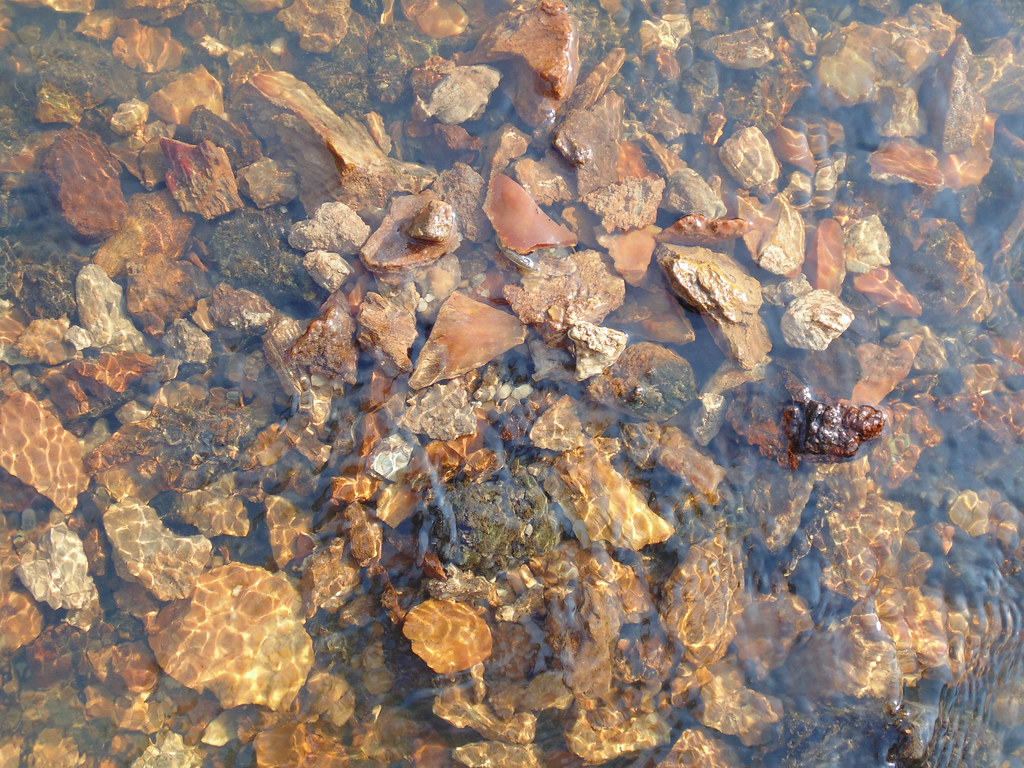
Such infrequent shoals must have served as butchering locations as many scrapers are found.
Meat prep tools.
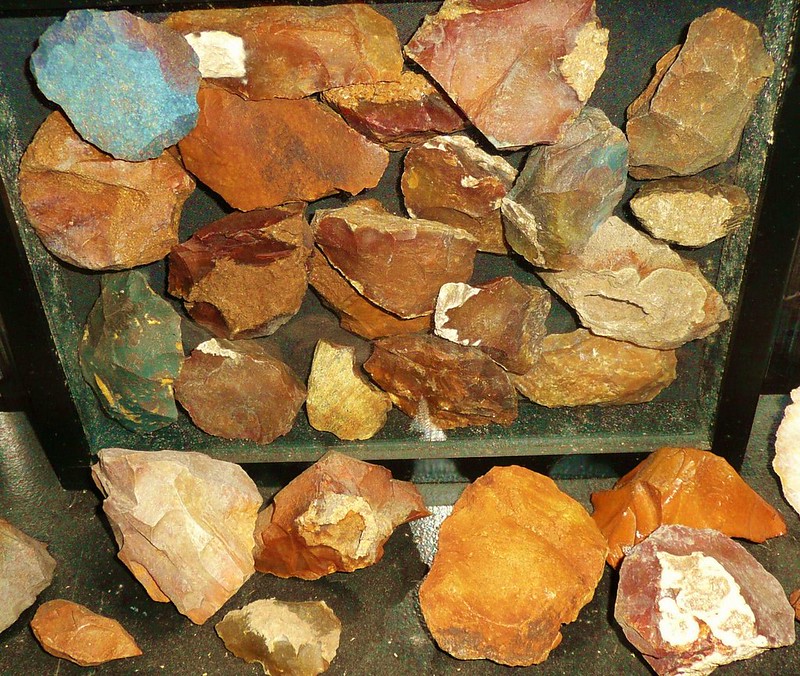
Well stained and sand polished turtle back scraper. Patina has a story. Probably a quicky for a given kill.
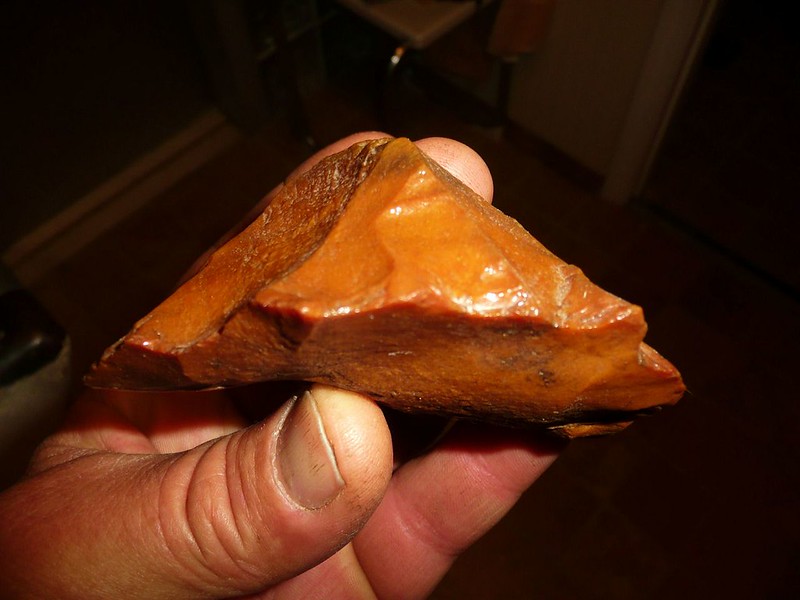
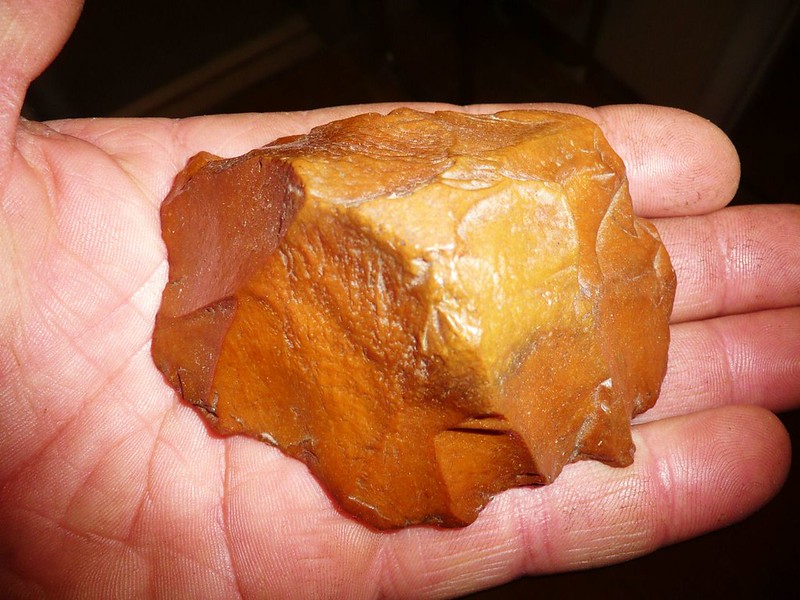
Source of silica is thick layer of limestone bed rock composed of tiny dissolvable porous diatoms from ancient oceans.
Creates large supply of pure dissolvable silica to replace the porous coral. Add available mostly iron metal salts and colors occur.

Bottom ground flat and epoxied to 5" X 5" X 3/4" acrylic base sold in the trophy business

Another shot on a cloudy day outside, bluer due to cloud cover

Thick husk from a spot where these occur on the Withlacoochee River. Sawn at 45 degree angle to tubes.
Silicification fingering out into husk. Husk silicified but porous.

Glare photo showing satin face polish and porosity but partial silicification in husk. 45 degree angle approach of saw to tubes.


Incandescent lighting

in some cases the silicification is in separate blobs. Sometimes dozens of silicified patches in a single large coral head.
As nature breaks down the softer husk the silicified sections separate and turn into gravel that forms gravel bars.
These smaller pieces look like miniature corals, but are actually silicified sections of the much larger original coral head.
Water soaking into the porous areas and freeze and quickly break the large corals down into pure silicified pieces.
Thick husks like this must be pried out of the clay below the freeze line where they were protected from the environment.
Or underwater for most of their existence.
Or water will freeze in cavities like the ones below and force the it to break apart leaving botryoidal faces and/or individual hollow sections


Silicified coral segment 'gravel' at most any shoal. Stained from predominate grey color to caramel by tannic water.
Always find high speed chips from native man making his spears and tools deeply stained from many years of exposure to the tannic water.
Tannic stain telling on long term exposure to tannic water.

Such infrequent shoals must have served as butchering locations as many scrapers are found.
Meat prep tools.

Well stained and sand polished turtle back scraper. Patina has a story. Probably a quicky for a given kill.


Source of silica is thick layer of limestone bed rock composed of tiny dissolvable porous diatoms from ancient oceans.
Creates large supply of pure dissolvable silica to replace the porous coral. Add available mostly iron metal salts and colors occur.














